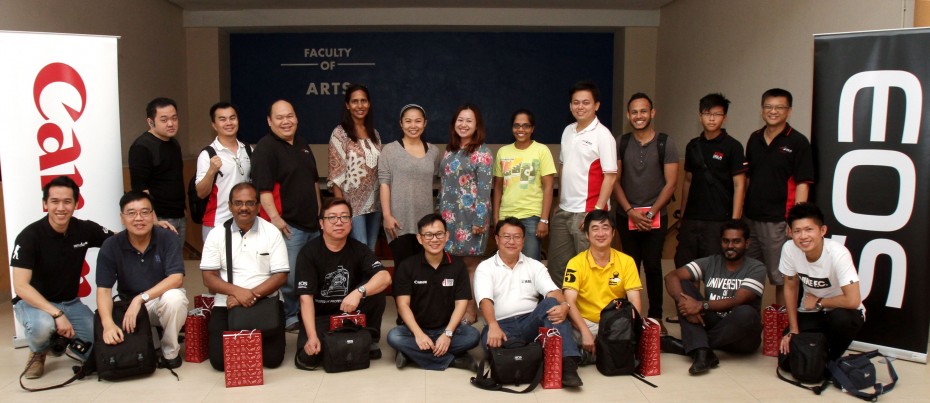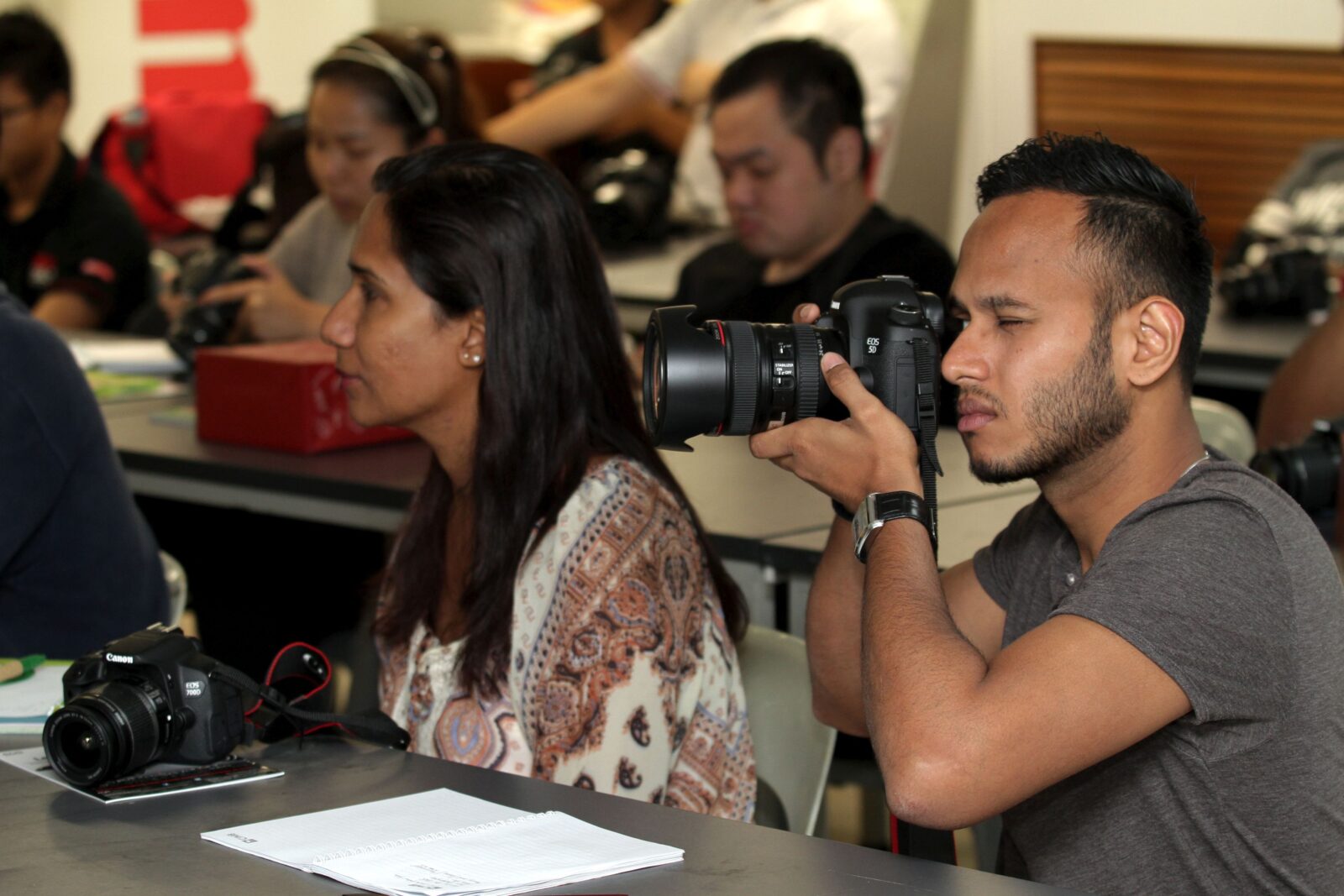By SHANJEEV REDDY
alltherage@thestar.com.my
LEARNING to use a professional camera might seem redundant these days, as taking photos on smartphones is quicker, easier and requires zero technical skills.
“Everyone’s so attention-seeking these days. All they do is take photos with their smartphones so they can post them online,” said Christopher Choong, Marketing Executive of Canon Malaysia.
“I’m not against taking photos with phones at all. In fact that’s how people get into photography. Once they come to a stage where the type of photo they want to take cannot be achieved with a phone, that’s when they move to cameras,” he said.
“I’ve had my camera for a long time but no one to teach me how to use it.” – Chong Kar Kian, 30.

Kik taught participants how to use a camera’s aperture and shutter speed settings, among other things. More EOS Academy workshops will be held throughout the year. — Photos: YAP CHEE HONG/The Star
At the Canon EOS Academy’s Basic Photography Workshop at Sunway University, trainer Jack Kik explained why certain photos can only be taken with a DSLR Camera. “When you take pictures of the night-sky, you need control over your camera’s aperture and when shooting fireworks, you need very slow shutter speeds,” he said.
While taking photos with a smartphone is extremely easy, the user has little to no control over the camera’s capabilities.
“When you visualise a photo, you must be able to get your camera to execute precisely what you have in mind, and this just isn’t possible with phone cameras,” said Choong.
Unfortunately, those eager to learn photography do not have many avenues to do so.
“I’ve searched on YouTube, forums and read articles in magazines but it’s just impossible to learn like that. The only people I can talk to are the sales guys and they also don’t know much,” said Chong, an interior designer.
Chong learned of the academy through Facebook and now strongly recommends it to aspiring shutterbugs looking to widen their skill set.
The E0S Club, a seven-year-old outfit made up of photography enthusiasts, is also a steady supporter of the EOS Academy workshops and members are ever willing to share their love of photography with others.
Salesman Mick Loke, one of the pioneering members of the club says, “We have members in different states and we love sharing our knowledge on photography with each other. We often gather in groups and organise shoots in different genres – from macro to nightscape, landscape, portrait, you name it!”
Advanced photographers can also participate in the EOS Academy’s Essentials and Thematics workshops. These workshops delve into the functions of the camera and different photography styles before sending participants on field trips.
In the next few months, the EOS Academy workshops will cover all types of genres, ranging from food and wedding photography right up to videography, so budding photographers will have lots to look forward to.

The participants from the Basic Photography Workshop will be added to the EOS Academy Facebook group, where everyone can keep in touch and share new tips.
For more info, go to canon.com.my.
Upcoming EOS Academy workshops!
If you want to take your interest in photography to the next level, check out these upcoming EOS Academy workshops.
□ Basic Wedding Photography: 25 July
□ Landscape Photography: 29 August
□ Basic EOS Movie: 22 August
□ Intermediate Videography: 19 September
□ Advanced Cinematography: 24 October
For registration and more details, email: chris_choong@ccm.canon.com.my






